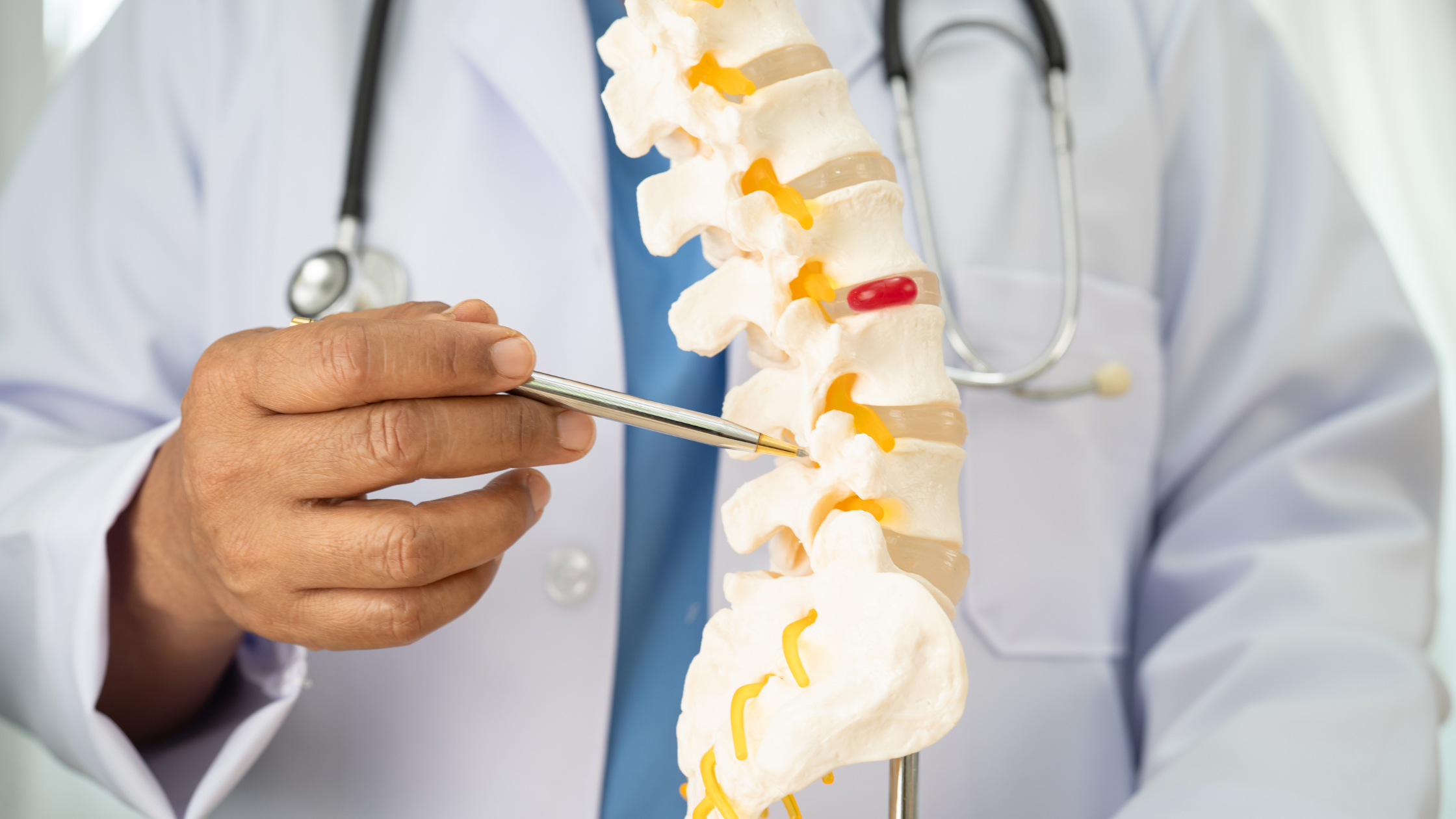Back pain is one of the most common reasons people visit a doctor, and one frequent cause is a condition known as degenerative disc disease (DDD). Despite its name, DDD is not technically a disease but a natural part of the aging process that affects the spine’s intervertebral discs. Understanding how it develops, what symptoms to watch for, and the available treatment options can help you manage pain and maintain a healthy, active lifestyle.
What Is Degenerative Disc Disease?
Your spine is made up of a series of bones called vertebrae, which are separated by intervertebral discs. These discs act as cushions or shock absorbers, allowing your spine to move flexibly and comfortably. Each disc has a tough outer layer (the annulus fibrosus) and a soft, gel-like inner core (the nucleus pulposus).
Over time, wear and tear or injury can cause these discs to break down or degenerate. As they lose hydration and elasticity, they become less effective at absorbing shock, leading to pain and stiffness in the spine.
Although DDD can occur anywhere along the spine, it most commonly affects the neck (cervical spine) and lower back (lumbar spine)—the areas that bear the most movement and stress.
Common Causes and Risk Factors
Degenerative disc disease develops gradually, and several factors contribute to its progression:
- Aging: Natural aging causes discs to lose fluid and become thinner, reducing their cushioning ability.
- Injury: A sudden injury or repetitive strain can damage a disc and accelerate degeneration.
- Genetics: Some people are predisposed to faster disc degeneration.
- Lifestyle factors: Smoking, obesity, and a sedentary lifestyle can decrease disc health and slow healing.
- Occupational stress: Jobs involving heavy lifting, twisting, or repetitive movements can increase wear and tear on the spine.
Symptoms of Degenerative Disc Disease
Symptoms vary depending on the affected area and severity of disc degeneration. Some people may experience mild discomfort, while others develop chronic pain that limits daily activities.
Common symptoms include:
- Chronic pain in the neck or lower back that may worsen when sitting, bending, lifting, or twisting.
- Radiating pain into the arms (cervical DDD) or legs (lumbar DDD), often caused by nerve compression.
- Muscle weakness or numbness in affected limbs.
- Stiffness and reduced flexibility, especially after long periods of inactivity.
- Pain relief when lying down or changing positions, as pressure on the disc decreases.
If the degeneration leads to herniation, bone spurs, or nerve impingement, symptoms may become more severe or persistent.
Diagnosing Degenerative Disc Disease
A proper diagnosis starts with a comprehensive physical exam and a discussion of your symptoms and medical history. Your provider may order imaging tests such as:
- X-rays, which can show narrowing between vertebrae or bone spurs.
- MRI scans, which reveal the condition of soft tissues like discs and nerves.
- CT scans or discography, in some cases, to pinpoint the source of pain.
Accurate diagnosis helps rule out other causes of back pain, such as spinal stenosis, herniated discs, or arthritis.
Treatment Options
While degenerative disc disease cannot be reversed, many effective treatments can reduce pain, improve mobility, and slow progression. Most patients find relief with nonsurgical therapies, such as:
- Physical therapy: Strengthening core and back muscles helps support the spine and improve flexibility.
- Medications: Over-the-counter pain relievers, anti-inflammatory drugs, or prescription medications can ease discomfort.
- Epidural steroid injections: These can reduce inflammation and nerve irritation around affected discs.
- Lifestyle modifications: Maintaining a healthy weight, quitting smoking, and practicing good posture can protect your spine.
- Heat and cold therapy: Alternating hot and cold packs can relieve pain and reduce stiffness.
If conservative treatments are ineffective and pain significantly limits daily life, surgical options may be considered. Procedures such as spinal fusion or artificial disc replacement can stabilize the spine and restore function.
Living Well with Degenerative Disc Disease
Managing DDD involves more than medical treatment—it’s also about lifestyle balance. Regular low-impact exercise like swimming, yoga, or walking can help maintain flexibility and strength. Avoiding prolonged sitting, lifting properly, and practicing good ergonomics can all make a difference.
It’s also important to listen to your body. Flare-ups can happen, but with proper care and professional guidance, most people can manage their symptoms and lead active, fulfilling lives.
When to Seek Help
If you experience persistent back or neck pain, numbness, or weakness that interferes with your daily activities, it’s time to consult a pain management or spine specialist. Early evaluation and personalized treatment can prevent worsening pain and help you regain your quality of life.
Final Thoughts
Degenerative disc disease is a common cause of chronic spine pain, but it doesn’t have to define your life. With the right combination of therapies, lifestyle changes, and expert care, you can find lasting relief and keep moving forward with confidence.


